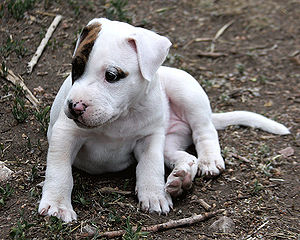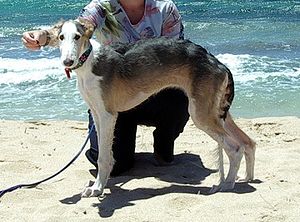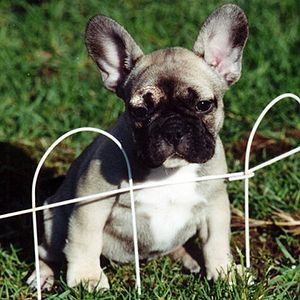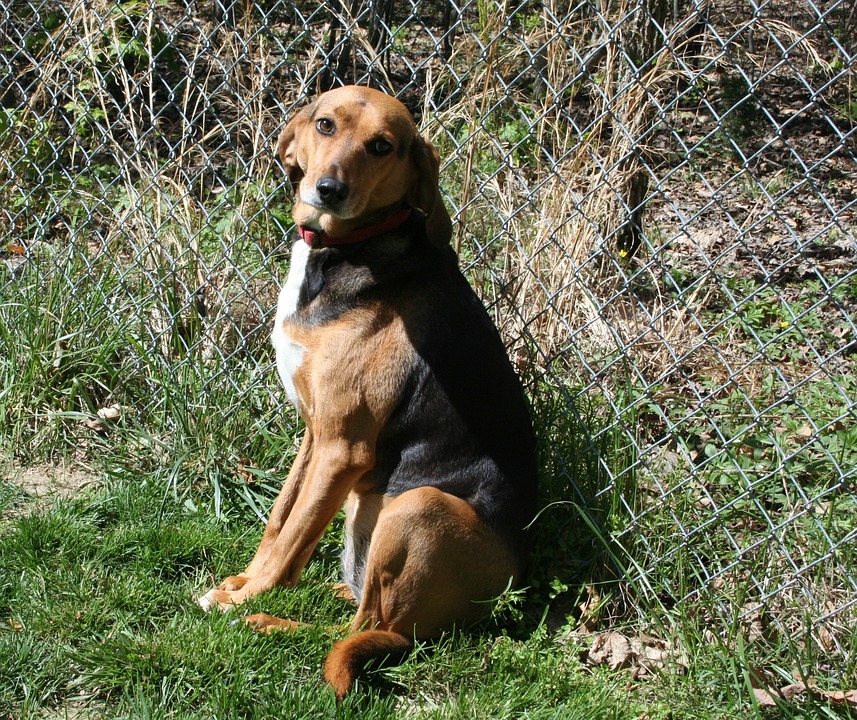 |
| Vital Statistics: |
| Place of Origin: United States |
| Group: Terrier |
| Height: 18-22 in. |
| Weight: 35-60 lbs. |
| Life span: about 12 yrs. |
| Trainability: moderate |
| Good with children: yes with early socialization |
| Good with other pets: may be dog aggressive |
What is the origin of the American Pit Bull Terrier?
The American Pit Bull Terrier or APBT can trace its ancestry to crosses between bulldogs and terriers in Great Britain as its cousin, the American Staffordshire Terrier. It was used to bait bears and bulls until this practice was deemed inhumane. Rats were then used, placing them in a pit with the dogs. The name stems from the pit. Dog fighting also became popular, but thank goodness is outlawed now in most places. The Pit Bull is sometimes wrongly referred to as the American Staffordshire Terrier to distinguish it from the smaller British Staffordshire Bull Terrier. The APBT was featured in “The Little Rascals” movies.
What does the American Pit Bull Terrier look like?
The APBT is a muscular, medium sized dog, 18-22 in. tall. Males weigh 35-60 lbs., females are 30-50 lbs. Ears are small to medium and may be cropped. Eyes can be round or almond-shaped. The tail is thick at the base tapering to a point. The coat is short and somewhat coarse. Colors are any color of dogs.
What is the temperament of the American Pit Bull Terrier?
Contrary to popular belief, the APBT is a friendly dog, even with strangers. They are loyal and eager to please. They must have early obedience training and socialization using kind but firm methods to prevent them becoming dominant and/or destructive leaving them no doubt you are the pack leader. While they are comfortable living in apartments, APBTs have lots of energy and need daily vigorous exercise and mental stimulation. You should be aware that many are dog-aggressive. Even if raised together, it is not advisable to leave them alone with other dogs or pets.
Unscrupulous people have bred these dogs to fight and therefore use caution and make sure the breeder you purchase the APBT from is reliable.
Note: Please check the laws of your city or state as APBTs are not allowed in certain areas.
What is the American Pit Bull Terrier used for?
With their high intelligence, APBTs excel in weight lifting, agility, flyball, lure-coursing and obedience. They have been used for search and rescue, as police dogs and as service dogs. With the right owners and raised properly, they are valued family companions.
Possible Health Issues
Hip dysplasia, spinocerebellar ataxia, thyroid and heart problems, bloat.
- Airedale Terrier
- American Stratfordshire Terrier
- Australian Terrier
- Bedlington Terrier
- Black Russian Terrier
- Border Terrier
- Boston Terrier
- Bull Terrier
- Cairn Terrier
- Cesky Terrier
- Dandie Dinmont Terrier
- English Toy Terrier
- Glen of Imaal Terrier
- Irish Terrier
- Jack Russell Terrier
- Lakeland Terrier
- Manchester Terrier
- Miniature Schnauzer
- Moscow Toy Terrier
- Norfolk Terrier and Norwich Terrier
- Old English Terrier
- Scottish Terrier
- Silky Terrier
- Skye Terrier
- Smooth and Wire-haired Fox Terrier
- Soft-coated Wheaten Terrier
- Tibetan Terrier
- Toy Fox Terrier
- Welsh Terrier
- West Highland White Terrier
- Wire Fox Terrier
- Yorkshire Terrier
- Alaskan Klee Kai
- Alaskan Malamute
- American Cocker Spaniel
- American Eskimo Dog
- American Foxhound
- American Stratfordshire Terrier
- Australian Shepherd
- Bichpoo
- Black and Tan Coonhound
- Blue Lacy
- Boston Terrier
- Boykin Spaniel
- Carolina Dog
- Catahoula Leopard Dog
- Chesapeake Bay Retriever
- Chinook
- English Shepherd
- Maltipoo
- Mi Ki
- Miniature American Shepherd
- Mountain Cur
- Plott Hound
- Rat Terrier
- Redbone Coonhound
- Redtick Coonhound
- Silken Windhound
- Toy Fox Terrier
- Treeing Tennessee Brindle



